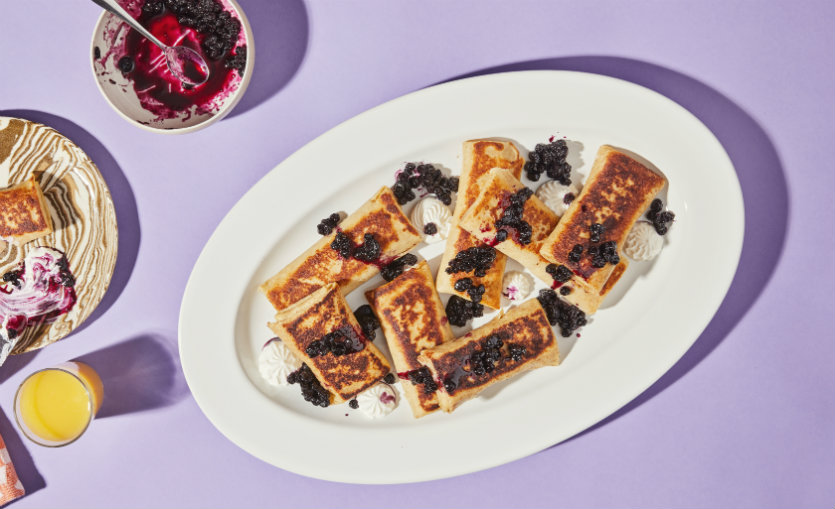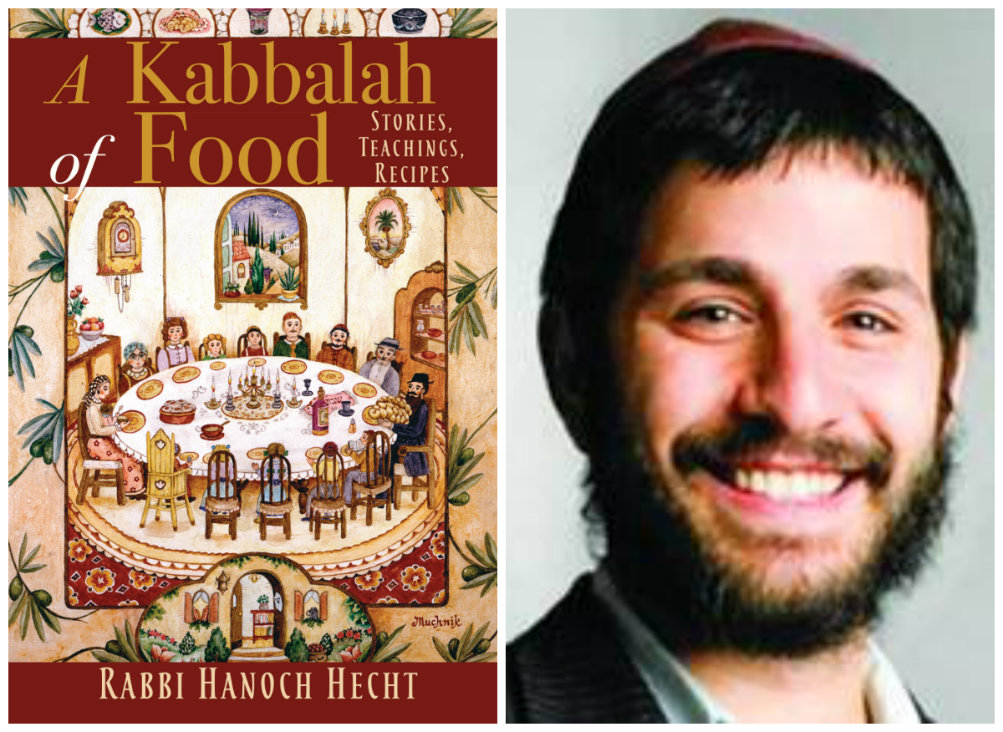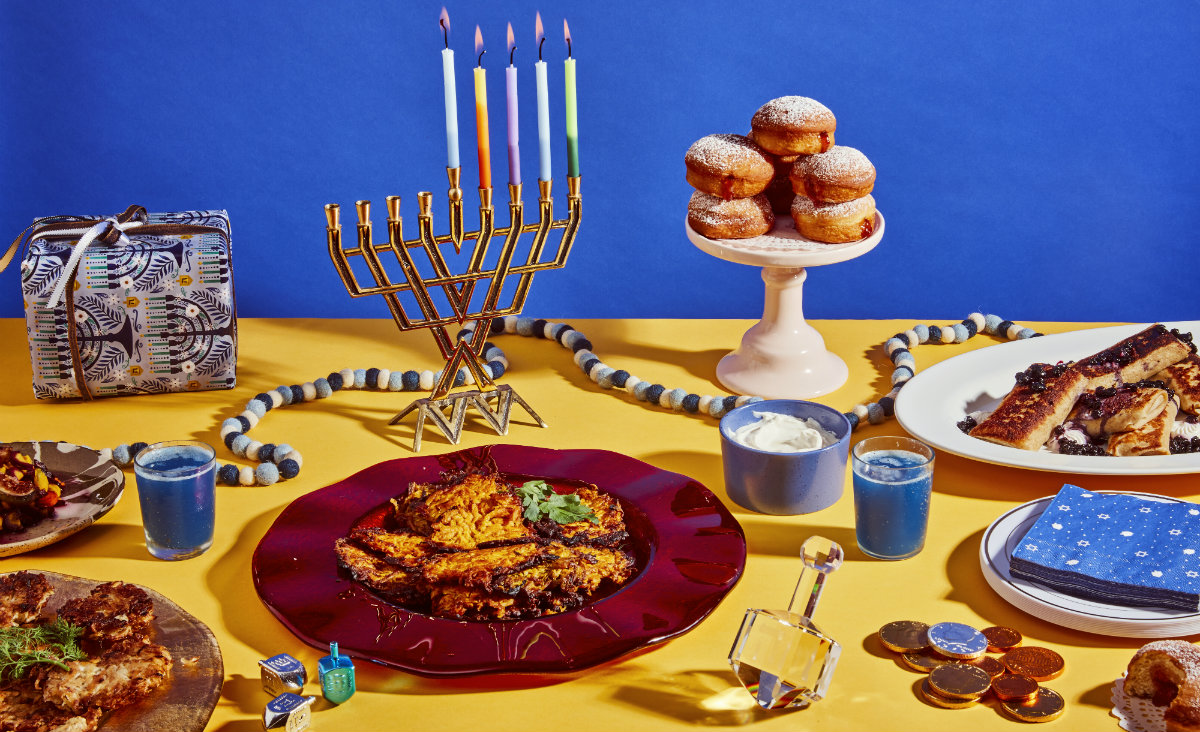In “A Kabbalah of Food,” The “Chopped” Rabbi’s Stories Revolve Around Eating
Rabbi Hanoch Hecht shares his passion for food and its relationship to spirituality and connecting to God.

Rabbi Hanoch Hecht shares his passion for food and its relationship to spirituality and connecting to God.

“A [cook] book without stories would not be a book,” says Rabbi Hanoch Hecht, leader of the Rhinebeck Jewish Center and director of Chabad of Dutchess County. Coming from a family of notable rabbis in the United States and around the world, Rabbi Hecht knows of what he speaks. His book, A Kabbalah of Food: Stories, Teachings, Recipes, released last month, combines two essential ingredients of Jewish life: stories and food. It’s filled with 39 Chassidic tales that revolve around food and eating, each followed by a spiritual teaching, and 63 recipes traditionally prepared for Shabbat and major Jewish holidays.
The idea for the book came, fittingly, amid lox and bagels at a Sunday breakfast. During a group that gathers with the rabbi to study different texts of Kabbalah — the mystical part of Judaism —one of the students suggested he write a book, reflecting exactly what they were doing: eating and spending time in spirituality. “They go hand in hand,” the rabbi says.
The charge to Rabbi Hecht didn’t come out of the blue, however. You could almost call him a celebrity rabbi: He was the first rabbi to appear on The Food Network’s "Chopped" (title: “Leap of Faith,” in which he competes with a priest, a nun-in-training, and a pastor). He’s made latkes on Good Day New York and has taught Kosher cooking at the Culinary Institute of America.
Hecht’s love of cooking developed when he was a smart-alec student, sent out of the classroom and into detention with the school’s cook, who shared with him the secrets of her preparations. Now, he cooks with his own seven children, especially in preparation of a holiday. This year, their focus is on a gluten-free donut.
Food and rituals have helped Judaism survive almost 4,000 years, and the food-focused stories Hecht includes delve into the mysteries of the Kabbalah, the joy of the Chassidim, and the power of religious faith and acts of kindness (mitzvot). In “A Taste of Eden,” we learn that it is as important to taste the spark of godliness within the food as it is to taste the food’s textures, flavors and seasonings. In “But Is This Food Kosher?” a group of Chassidim travel to a certain village, where they stop to eat at an inn. Learning that the inn serves only meat, the group begins interrogating the innkeeper about Kosher laws: “Who’s the slaughterer? What type of animal are you serving? How was it killed? How was it salted?” A man seated near the group calls out, “For all that goes into your mouth, you’re so scrupulous, but are you as careful about what comes out of your mouth?” In that, we are taught that we need to be mindful about how we express our needs when it comes to food.
Not only is food one of the fundamental parts of Jewish tradition, Hecht says, but it may be the most important part in educating children. “On Passover, we eat matzoh, at the new year, we dip apples in honey. It’s a fundamental path to educating our children on spirituality.”
The Kabbalah of Food speaks to that practice, offering both familiar and more contemporary recipes for the Sabbath and the holidays. There are recipes from both the Ashkenazic and Sephardic traditions, and Hecht provides background on why each food is traditional for each holiday; most of the foods represent something significant. The recipes are not complex —suitable for cooking with children — but all the essentials are there, and readers can rely on the book when meal planning for every major Jewish holiday and Shabbat.
The rabbi’s Hanukah recipes include, of course, variations on the latke, but he also offers another of his favorites, fruit blintzes. His recipe starts with a package of regular crepe dough, making it quick, easy, and extremely tasty with its inclusion of goat cheese.

Rabbi Hanoch Hecht's Fruit Blintzes
Yield: 8-10 blintzes
1 Tablespoon maple syrup
1 cup blueberries
4 oz. goat cheese
8 oz. plain Greek yogurt or sour cream
2 Tablespoons brown sugar
1 package regular crepe dough
3 Tablespoons oil for frying
Mash the blueberries, cheese, yogurt or sour cream, brown sugar, and maple syrup together with a fork; strain the filling with a fine mesh strainer.
Heat oil for frying in a pan.
Fill each crepe with two tablespoons of filling and wrap like an egg roll. Cook in oil until golden brown.

